Learn how researchers are creating greener printed electronics with innovative materials and low-impact manufacturing, enabling devices that combine sustainability with superior performance.

Addressing environmental challenges and developing greener processes and products is a shared priority across today’s R&D landscape. Whether your work focuses on inks, substrates, thin films, sensors, or emerging device architectures, sustainability is a now core design consideration. As the push toward low-impact materials and energy-efficient manufacturing grows, the printed-electronics community is responding with genuinely promising solutions.
In a recent Special Issue of ACS Applied Electronic Materials, we highlighted nine research papers featuring some of the latest sustainability breakthroughs in printed electronics—offering a clear view of where the field is heading. These studies include advances in green conductive inks, nanomaterial-based sensing platforms, biodegradable and recyclable substrates, and energy-efficient or low-temperature processing routes that reduce the environmental footprint of printed devices without compromising performance.
What stands out is the diversity of approaches. Some teams are redesigning substrate chemistry; others are refining interface engineering or testing alternative device architectures that operate at lower voltages or support circular-economy recovery.
A clear theme emerges from the reading: sustainability is being engineered at every layer of the materials-to-devices pipeline. Instead of relying on conventional synthetic polymers, high-energy curing, or heavy-metal-rich materials, these scientists are developing credible alternatives. From chitosan-lignin substrates to lead-free perovskites to direct-laser-written energy devices, the studies in this special issue capture how the field is translating sustainability goals into real, testable technologies.
We invite you to explore these articles and discover insights that inspire your own research. This collection demonstrates that truly sustainable electronics at an industrial scale are closer than many think. The framework for a sustainable future is being built, printed, characterized, and refined—right now.
Sustainable Development of Printed Electronics: Explore Research Articles
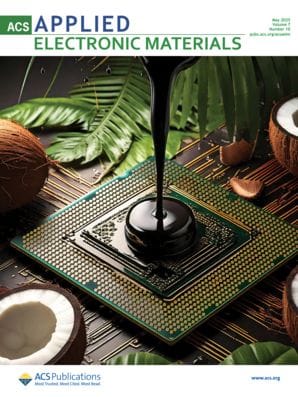
Inkjet Printable Conductive Activated Carbon Ink from Sustainable Sources
DOI: 10.1021/acsaelm.4c01509
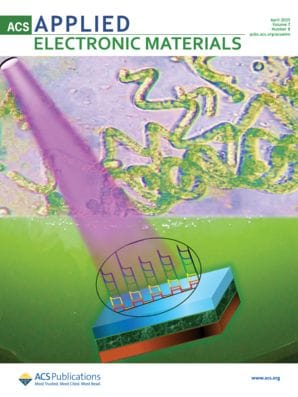
Chitosan-Based Substrates for Flexible, Printable and Sustainable Organic Electronic Devices
DOI: 10.1021/acsaelm.5c00217

Threshold Resistive Switching in Inorganic Lead-Free Cesium–Bismuth Iodide Perovskite for Neuron Emulation
DOI: 10.1021/acsaelm.5c00516

Impedimetric Immunosensor for 5-Methylcytosine Detection Based on a Poly(o-phenylenediamine)-Encapsulated Gold Nanoparticle Platform
DOI: 10.1021/acsaelm.5c00216

Miniaturized Micrometer-Level Copper Wiring and Electrodes Based on Reverse-Offset Printing for Flexible Circuits
DOI: 10.1021/acsaelm.5c00230
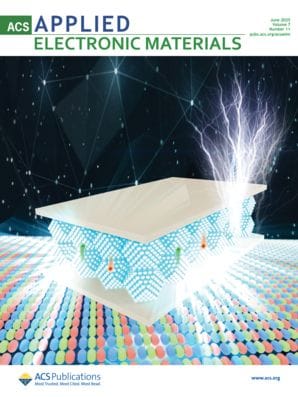
Eco-Friendly Energy Storage and Energy Harvesting Devices Fabricated by Direct Laser Writing of Chitosan-Lignin-Boric Acid Substrates
DOI: 10.1021/acsaelm.5c00234

Sustainable Multi-stack Printed Heaters on Paper with Efficient Heat Distribution
DOI: 10.1021/acsaelm.5c00305
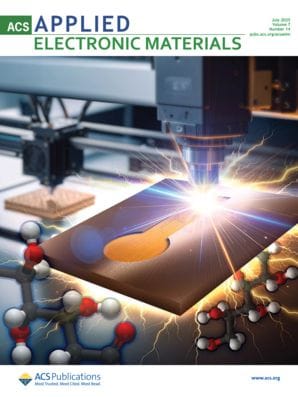
Enhancing Humidity Sensing with Functionalized Perylene-Coated Dispense Printed Electrodes: A Comparative Study
DOI: 10.1021/acsaelm.5c00360
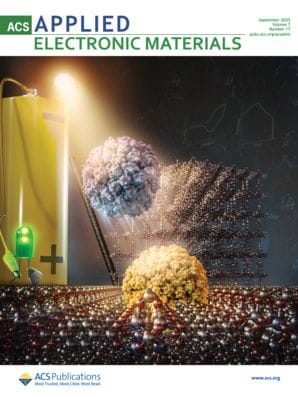
Metal-Electrolyte-Semiconductor Capacitors to Quantify Interface State Density in Printed ZnO for Low-Voltage UV Photodetectors
DOI: 10.1021/acsaelm.5c01263
Want to read more? Subscribe to ACS Industry Insider
If you'd like to keep discovering leading research in your area, subscribe to ACS Industry Insider. Each month, we'll send you complimentary access to five hand-picked, high-impact articles in the topics that matter most to you.